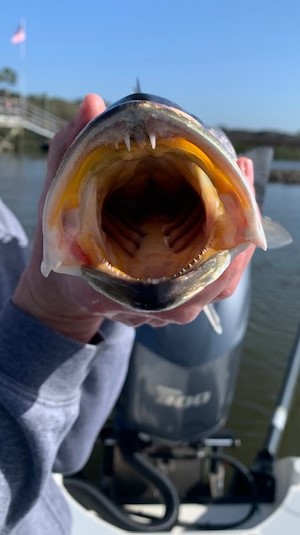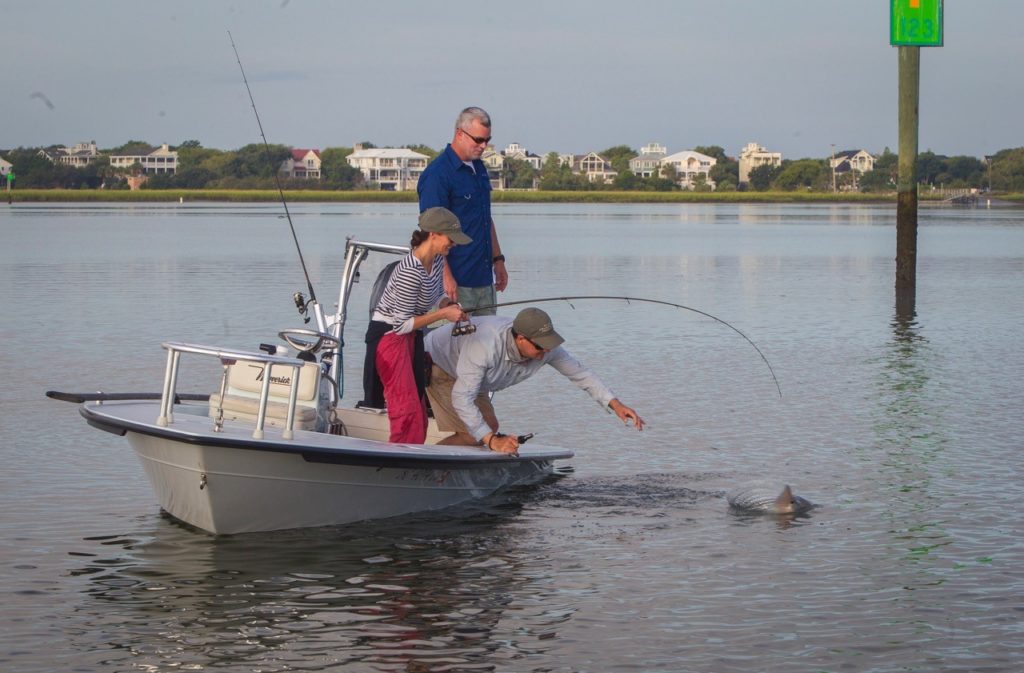The one thing South Carolina anglers can count on in the spring is changing conditions.
By Capt. Peter Brown
If there’s one thing anglers can count on it’s that no two days will ever be the same. Here in the Lowcountry, the tide rises and falls anywhere from 4 to 7 feet twice a day and spring is a transitional time when conditions change every hour and the variables that affect fishing are in a constant state of flux.
Signs of the changing seasons are literally everywhere. Some of the most reliable trends are those known to locals who have spent years honing their skills to catch some of the more seasonal inshore species. As unpredictable as nature can be, when it comes to fishing there are some definite benefits to being out there in the springtime.
Water temperature is the driving factor as the warming waters usher in the arrival of baitfish and shrimp, two major food sources for fish species that make their presence known every spring. The cool, clear water that we find from December to late March is normally in the 50- to 60-degree range and provides for a lot of the sight fishing for redfish during those months. But, as temperatures rise into the 60s and 70s, the estuaries become a completely different environment, rich with opportunity for other species.
Some of the early signs can be subtle. Wading birds can be seen staging along the marsh edges, dipping their beaks while nearby terns dive after glass minnows. Tiny shrimp, almost too small to see, will stack up in the smallest of creeks while mummichogs (mud minnows) and other small baitfish like croaker, spot and pinfish begin their own life cycles in the nursery grounds of the oyster lined marshes.

Off the beaches and in the rivers, small menhaden start to appear, popping on the surface and schooling by the thousands in the inlets, creeks and marinas. All these patterns begin as water temperatures rise. Meanwhile trout, ladyfish, bluefish, jacks and Spanish mackerel will show up off the beaches, in the inlets and in the rivers and can often be the best targets for inshore anglers.
Follow the bait to find fish this time of year, and which bait the fish prefer to feed on changes with the prevalence of that particular food source. So, the key is to look for the tell-tale signs of what is happening and be willing to try new areas and techniques. Here are several methods anglers use to find these seasonal fish during this transitional time.
Prospecting
Be on the lookout for any disturbance or “nervous water” that could be signs of the presence of fish. Birds working a tide line, glass minnows or shrimp jumping or showering on the surface can indicate feeding fish below. Actively feeding schools of fish will sometimes cause a slick on the surface from the oil in the baitfish. If you see a slick, it’s likely the right spot to stop and cast.
Patterns
Year after year, schools of fish will show up at similar times in similar areas. When they arrive corresponds with similar water temperature, tidal flow, time of day, and wind and weather conditions. This is where keeping a logbook or some kind of record of your fishing experiences can really pay off by giving you an idea of where to be and when depending on the circumstances.
Natural features
At the tide ebbs, baitfish and shrimp are carried by the current. Small creek mouths and points of larger creeks create natural ambush points for trout, ladyfish and other feeding fish.
Structure
Look for key types of structure that hold fish, either natural or man-made. Large oyster beds adjacent to deeper water, with heavy current, will create an “eddy” in the current and often a drop-off where fish will stage in the current. Around underwater humps or drop-offs, fish upcurrent and downcurrent as fish will often use the underwater relief to hold in the current and feed while the tide is running. Docks in the deep bends of creeks can be highly productive as fish congregate in the holes, in the shade and in the structure itself. A dock is basically an artificial reef if it’s in the right location. Large piers adjacent to deep water often create current and will hold fish both up-current and down-current of the structure.
Electronics
Many anglers and guides catch plenty of fish without them, but there is no doubt technology has come a long way and can be a useful tool for finding fish. Sounders with side scan features can be extremely helpful in seeing fish that hold on ledges and around structure. Communication with other anglers can also be very helpful, and people are usually happy to share general information about fishing trends as long as it’s done discreetly, without blasting coordinates for the best fishing spots all over the internet. Local tackle shops can be a great help when getting started, to learn which patterns to look for on the water.
Match the hatch
Find baits that are naturally on the menu for that specific area. If that doesn’t work, try something different or use artificials of a similar size. Artificial lures that imitate glass minnows, menhaden, shrimp, mullet and other baitfish are highly effective when fishing inshore this time of year. Keep a tackle bag or box with various sizes of jig heads, various plastics such as Z Man Jerk Shadz and DOA Shrimp. Lures including Zara Spooks, Shimano Coltsnipers, Shimano Orca Poppers, Clark Spoons, diamond jigs, and a variety of topwater lures are always a good idea to have on board. It’s not uncommon to encounter fish that will chase a lure more readily than a live bait.
No more secrets
While the abundance of bait this time of year can often determine what to fish with and where, the idea of having “secret” fishing spots becomes more difficult with the increasing number of boats on the water, particularly with all the technology and trading of information these days.
Still, it’s the when, where and how of inshore fishing that are personal and unique to every angler and their approach to fishing. Success, failure and trial-and-error are part of the experience that should not be taken for granted. Too many people expect instant gratification in the outdoors, but if anything will quickly humble even the most accomplished anglers, it’s saltwater fishing.
The journey to success is what makes it all worthwhile, so make sure to enjoy the journey. It will all be different next year.









